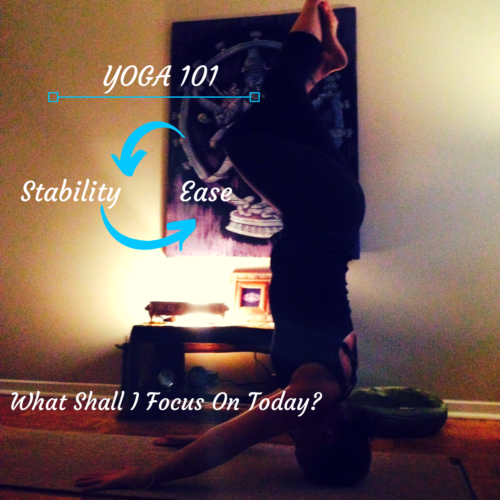Yoga and Cultivating Stability and Ease
 Yoga Asanas
Yoga Asanas
An asana (yoga postures) is a good seat for the mind and the body and a good seat is one that is both stable and easeful. We stabilize the mind in part through drishti (a steady and easeful focus for the eyes) and in part through breath. Not by trying to control the breath, but by giving it space. And, when it comes to the body, the asanas bring moments of physical stability and we learn to maintain this stability with ease (not to be confused with easy) rather than resistance. Those moments when we feel the difference between holding space with stability and ease rather than rigidity and resistance brings the essence of yoga to life.
Stability and Ease in Daily Life
This unity of stability and ease is not only present in the context of yoga asanas but it is relevant in our life as a whole. If we feel grounded/stable with who we are we don’t fear falling, in part because we are solid and in part because we know how to get back up without too much drama not if we fall but when we fall; As being grounded is rooted in humility and in the acceptance that there will always be windy periods and that falling does not mean I have to lose my inner stability. In the same way, if we cultivate the sense of ease, we soften our edge and stop taking ourselves too seriously which brings curiosity and the feeling of possibilities to the mind. If we only focus on stability we become rigid, serious and intense and one strong wind will split us in half (burn out). And, if we make it all about ease, we loose touch with our grounding and we drift into laziness. The unity of effort/discipline and effortlessness/acceptance brings the harmony.
From I don’t care what you think to I am not attached to what you think.
The interplay of stability and ease is where the magic resides
One place where we lose our stability and ease is when we define our choices by what we think (or know) others think of us. From this perspective it’s important to know that the freedom lies not in trying to convince ourselves that we don’t care about what people think, but the freedom is found in our ability to cultivate non-attachment which is rooted in stability and ease. The more we understand the difference between I don’t care and I am not attached the more we experience stability and ease and vice versa.
Tips to explore the interplay of stability and ease:
- In asana practice and in daily life, have moments when you steady the eyes and keep them quiet and easeful;
- When standing in line explore standing in a stable and yet easeful manner;
- Get to know you. Are you all about my way or the highway? Are you attached to the idea that hard work and only hard work leads to success? Or, are you unable to make decisions? Are you always looking for the easy way out? Or, do you have more moments when you cultivate practices that enhance your confidence and yet allows for curiosity and possibilities?;
- In effort (sports, work or…), try relaxing the jaw and eyes. Experience how we can be productive without being rigid;
- Call on the feelings of stability in movement and ease in chaos;
- Explore the subject in various ways that are meaningful to you; and
- Practice my guided grounded and light meditation found on the virtual yoga page of my website.
Aum Shanti!
Sylvie
“Happiness is when what you think, what you say, and what you do are in harmony.”
– Mahatma Gandhi


